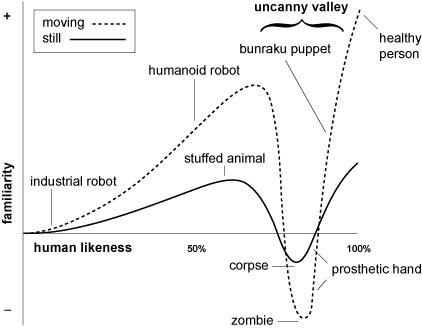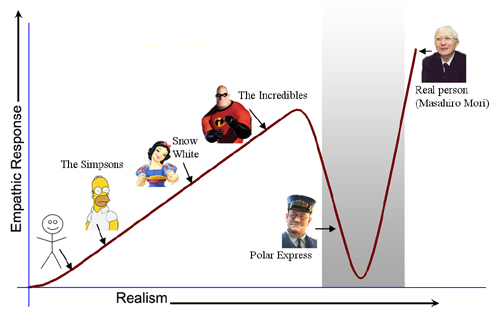I’ve been meaning to mention the upcoming (May 6, 2010) British election for the last while as I’ve seen notices of party manifestos that mention science (!) but it was one of Dave Bruggeman’s postings on Pasco Fhronesis that tipped the balance for me. From his posting,
CaSE [Campaign for Science and Engineering] sent each party leader a letter asking for their positions with respect to science and technology issues. The Conservatives and the Liberal Democrats have responded so far (while the Conservative leader kept mum on science before the campaign, now it’s the Prime Minister who has yet to speak on it). Of the two letters, the Liberal Democrats have offered more detailed proposals than the Conservatives, and the Liberal Democrats have also addressed issues of specific interest to the U.K. scientific community to a much greater degree.
(These letters are in addition to the party manifestos which each mention science.) I strongly recommend the post as Bruggeman goes on to give a more detailed analysis and offer a few speculations.
The Liberal Democrats offer a more comprehensive statement but they are a third party who gained an unexpected burst of support after the first national debate. As anyone knows, the second debate (to be held around noon (PT) today) or something else for that matter could change all that.
I did look at the CaSE site which provides an impressive portfolio of materials related to this election on its home page. As for the organization’s mission, before getting to that you might find its history instructive,
CaSE was launched in March 2005, evolving out of its predecessor Save British Science [SBS]. …
SBS was founded in 1986, following the placement of an advertisement in The Times newspaper. The idea came from a small group of university scientists brought together by a common concern about the difficulties they were facing in obtaining the funds for first class research.
The original plan was simply to buy a half-page adverisement in The Times to make the point, and the request for funds was spread via friends and colleagues in other universities. The response was overwhelming. Within a few weeks about 1500 contributors, including over 100 Fellows of the Royal Society and most of the British Nobel prize winners, had sent more than twice the sum needed. The advertisement appeared on 13th January 1986, and the balance of the money raised was used to found the Society, taking as its name the title of the advertisement.
Now for their mission statement,
CaSE is now an established feature of the science and technology policy scene, supported among universities and the learned societies, and able to attract media attention. We are accepted by Government as an organisation able to speak for a wide section of the science and engineering community in a constructive but also critical and forceful manner. We are free to speak without the restraints felt by learned societies and similar bodies, and it is good for Government to know someone is watching closely.
I especially like the bit where they feel its “good for Government” to know someone is watching.
The folks at the Canadian Science Policy Centre (CSPC) are also providing information about the British election and science. As you’d expect it’s not nearly as comprehensive but, if you’re interested, you can check out the CSPC home page.
I haven’t had a chance to read the manifestos and other materials closely enough to be able to offer much comment. It is refreshing to see the issue mentioned by all the parties during the election as opposed to having science dismissed as a ’boutique issue’ as an assistant to my local (Canadian)l Member of Parliament described it to me.
Memristors and artificial intelligence
The memristor story has ‘legs’, as they say. This morning I found an in-depth story by Michael Berger on Nanowerk titled, Nanotechnology’s Road to Artificial Brains, where he interviews Dr. Wei Lu about his work with memristors and neural synapses (mentioned previously on this blog here). Coincidentally I received a comment yesterday from Blaise Mouttet about an article he’d posted on Google September 2009 titled, Memistors, Memristors, and the Rise of Strong Artificial Intelligence.
Berger’s story focuses on a specific piece of research and possible future applications. From the Nanowerk story,
If you think that building an artificial human brain is science fiction, you are probably right – for now. But don’t think for a moment that researchers are not working hard on laying the foundations for what is called neuromorphic engineering – a new interdisciplinary discipline that includes nanotechnologies and whose goal is to design artificial neural systems with physical architectures similar to biological nervous systems.
One of the key components of any neuromorphic effort is the design of artificial synapses. The human brain contains vastly more synapses than neurons – by a factor of about 10,000 – and therefore it is necessary to develop a nanoscale, low power, synapse-like device if scientists want to scale neuromorphic circuits towards the human brain level.
Berger goes on to explain how Lu’s work with memristors relates to this larger enterprise which is being pursued by many scientists around the world.
By contrast Mouttet offers an historical context for the work on memristors along with a precise technical explanation and why it is applicable to work in artificial intelligence. From Mouttet’s essay,
… memristive systems integrate data storage and data processing capabilities in a single device which offers the potential to more closely emulate the capabilities of biological intelligence.
If you are interested in exploring further, I suggest starting with Mouttet’s article first as it lays the groundwork for better understanding memristors and also Berger’s story about artificial neural synapses.
The secret in their eyes (movie review)
I woke up at 6 am the other morning thinking about a movie I saw this last Sunday (April 18, 2010). That doesn’t often happen to me, especially as I get more jaded with time but something about ‘The Secret in Their Eyes‘, the Argentinean movie that won this year’s Oscar for Best Foreign Language Film woke me up.
Before going further, a précis of the story: a retired man (in his late 50s?) is trying to write a novel based on a rape/homicide case that he investigated in the mid-1970s. He’s haunted by it and spends much of the movie calling back memories of both a case and a love he tried to bury. Writing his ‘novel’ compels him to reinvestigate the case (he was an investigator for the judge) and reestablish contact with the victim’s grief-stricken husband and with the woman he loved who was his boss (the judge) and also from a more prestigious social class.
The movie offers some comedy although it can mostly be described as a thriller, a procedural, and a love story. It can also be seen as an allegory. The victim represents Argentina as a country. The criminal’s treatment (he gets rewarded— initially) represents how the military junta controlled Argentina after Juan Peron’s death in 1974. It seemed to me that much of this movie was an investigation about how people cope and recover (or don’t) from a hugely traumatic experience.
I don’t know much about Argentina and I have no Spanish language skills (other than recognizing an occasional word when it sounds like a French one). Consequently, this history is fairly sketchy and derived from secondary and tertiary sources. In the 1950s, Juan Peron (a former member of the military) led a very repressive regime which was eventually pushed out of office. By the 1970s he was asked to return which he did. He died there in 1974 and sometime after a military Junta took control of the government. Amongst other measures, they kidnapped thousands of people (usually young and often students, teachers [the victim in the movie is a teacher], political activists/enemies, and countless others) and ‘disappeared’ them.
Much of the population tried to ignore or hide from what was going on. A documentary released in the US in 1985, Las Madres de la Plaza de Mayo, details the story of a group of middle-class women who are moved to protest, after years of trying to endure, when their own children are ‘disappeared’.
In the movie we see what happens when bullies take over control. The criminal gets rewarded, the investigator/writer is sent away for protection after a colleague becomes collateral damage, the judge’s family name protects her, and the grieving husband has to find his own way to deal with the situation.
The movie offers both a gothic twist towards the end and a very moving perspective on how one deals with the guilt for one’s complicity and for one’s survival.
ETA: (April 27, 2010) One final insight, the movie suggests that art/creative endeavours such as writing a novel (or making a movie?) can be a means for confession, redemption, and/or healing past wounds.
I think what makes the movie so good is the number of readings that are possible. You can take a look at some of what other reviewers had to say: Katherine Monk at the Vancouver Sun, Curtis Woloschuk at the Westender, and Ken Eisner at the Georgia Straight.
Kudos to the director and screen writer, Juan José Campanella and to the leads: Ricardo Darín (investigator/writer), Soledad Villamil (judge), Pablo Rago (husband), Javier Godino (criminal), Guillermo Francella (colleague who becomes collateral damage) and all of the other actor s in the company. Even the smallest role was beautifully realized.
One final thing, whoever translated and wrote the subtitles should get an award. I don’t know how the person did it but the use of language is brilliant. I’ve never before seen subtitles that managed to convey the flavour of the verbal exchanges taking place on screen.
I liked the movie, eh?

